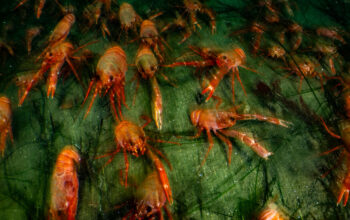
Globally, the H5N1 variant that has been spreading in birds has led to fewer than 10 known cases in people since December 2021, and there have been no documented instances of human-to-human transmission, according to the C.D.C.
“The H5 virus is not well adapted to humans,” said Dr. Jim Lowe, a veterinarian at the College of Veterinary Medicine at the University of Illinois at Urbana-Champaign.
The fact that the virus showed up on a mink farm is not particularly surprising, he said, and not necessarily cause for alarm. “It’s not, in my mind, a particularly worrisome situation for human health,” Dr. Lowe said. “Obviously it’s not very good for the mink.”
But a mink-adapted version of the virus could present a greater potential risk to people. “It’s more likely that such a virus will be more easily, efficiently spread among humans,” Dr. Kuiken said.
Eleven farm workers had contact with the mink; all tested negative for the virus, Dr. Monne and her colleagues reported. That fact is “reassuring,” Dr. Monne said. “But clearly, what is worrisome is that this virus is spreading everywhere.” That means that there will be more opportunities for the virus to infect, and potentially spread, in mink and other mammals.
The permeability of mink farms also means that a virus that begins spreading in mink could make its way off the farm. Mink sometimes escape from farms, and dogs and cats on mink farms with coronavirus outbreaks have also been infected with the virus, scientists have found.
These animals could potentially act as intermediate hosts, passing a mutated mink version of the virus on to humans or wild animals. In one recent study, Dr. Barton Behravesh and her colleagues used GPS collars to track the movements of free-roaming cats living on or around several Utah mink farms that had experienced coronavirus outbreaks. The cats roamed widely, the researchers found.



